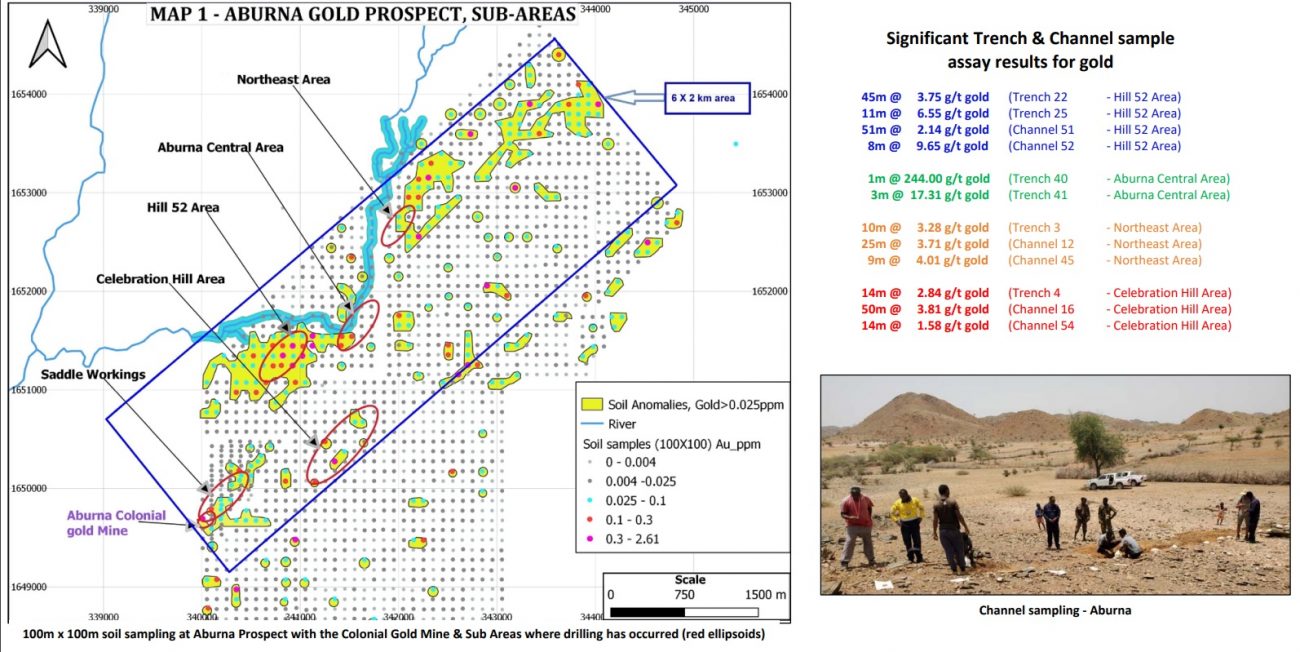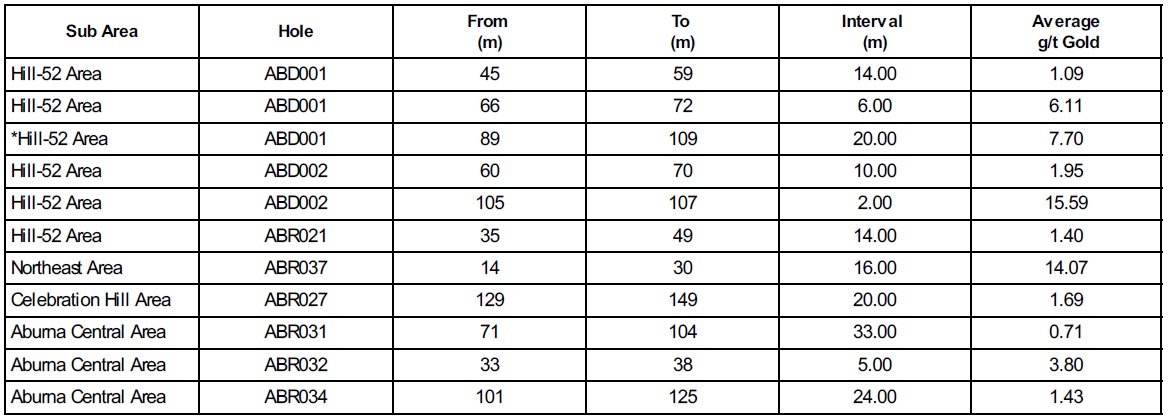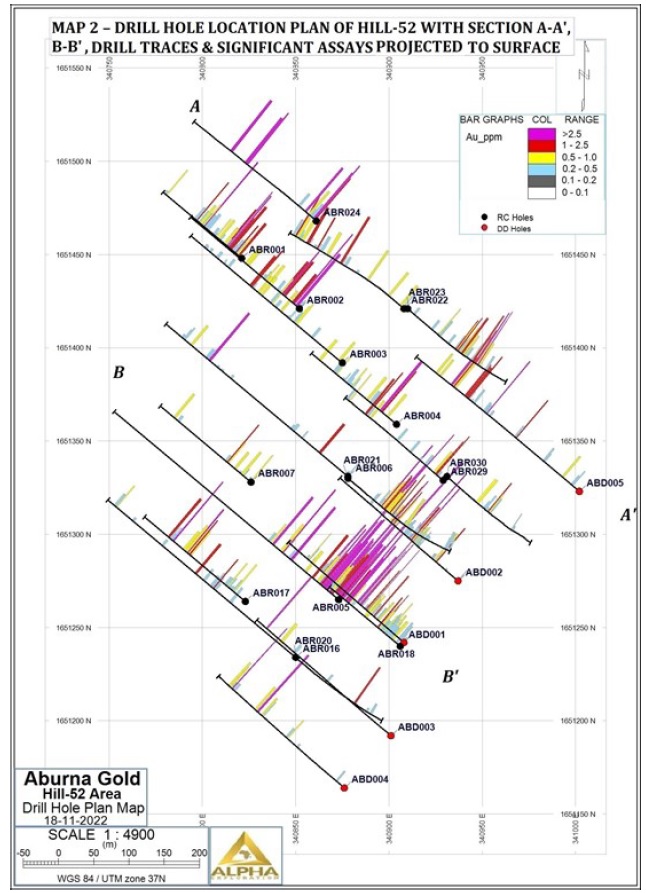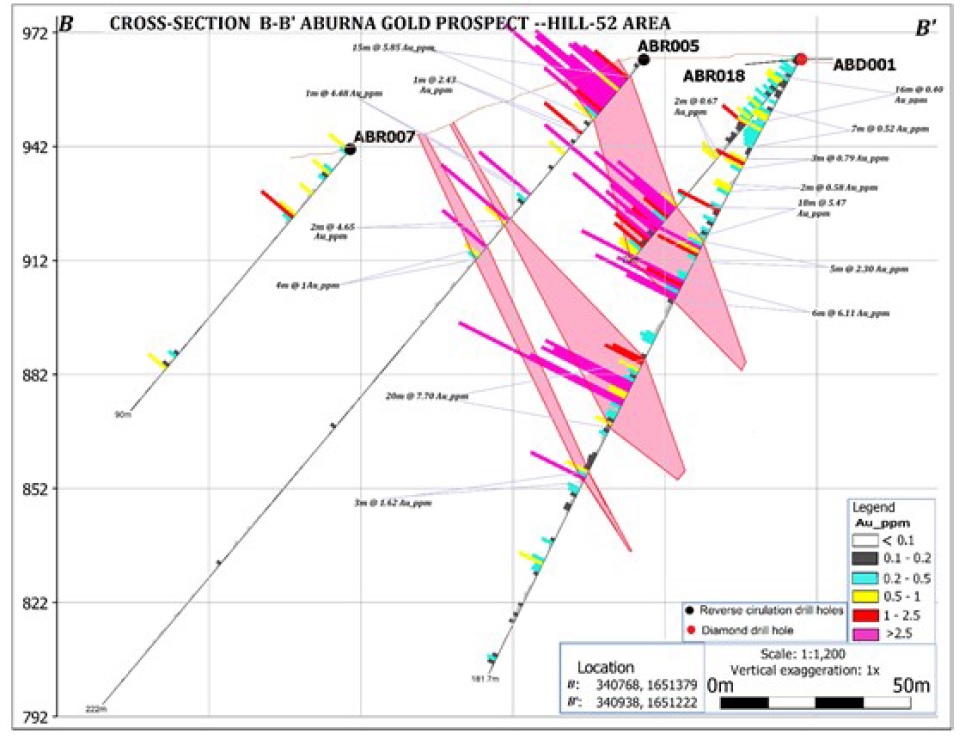
Alpha Exploration (ALEX.V) has released the assay results from the Aburna gold prospect, an area that was previously mined by Italian colonial miners. The initial drill results released in September were already encouraging, and the second batch of assay results now appears to confirm the validity of Aburna as a high grade gold target.
While we didn’t think encountering 20 meters of 7.7 g/t gold would be beat, Alpha Exploration succeeded in doing so as the average grade of the mineralization in hole ABR037, drilled on the Northeast Area, was 14.07 g/t over a length of 16 meters. This means that the gram*meter interval of hole ABR037 of 225 clearly exceeds the 154 from hole ABD001. Other drill results that were highlighted also confirm the presence of gold all over the 2,500 by 1,500 meter area the drill program has been focusing on (the entire Aburna prospect has a surface area of 6,000 by 2,000 meters).

The exploration update from Alpha was an intriguing one as the maps and images now start to show how the dots are being connected. The image below shows how consistent the mineralization appears to be at the Hill-52 area.

Meanwhile, the drill program has now also helped the company to better understand the mineralized structures. And while it’s still early days, the company estimates the true width of the mineralized intervals to be approximately 80% of the reported width.

According to CEO Michael Hopley, ‘the results to date suggest to me a major gold discovery by Alpha at Aburna; obviously more drilling is justified’. And that’s a fair comment and although the Anagulu copper-gold discovery was the first drilled discovery at Kerkasha, Aburna is rapidly becoming a favorite of ours as well.
At Anagulu, the company completed a deep hole (reaching a depth of 551 meters) to drill-test a chargeability anomaly at a depth of 200-500 meters below surface. Unfortunately the hole did not intersect the source of the broad zones of copper and gold mineralization that have been identified at Anagulu over a 2,000 meter strike length.

As you can see in the table above, gold and copper values were pretty low but Alpha thinks the increasing molybdenum content at the bottom of the hole may indicate a return of mineralization at greater depths.
Disclosure: The author has a long position in Alpha Exploration. Alpha is a sponsor of the website. Please read our disclaimer.

